Best Plants For Cleaning Indoor Air According to NASA
Put At Least One Of These Oxygen Bomb Plants At Home And Clean The Air You Breathe!

In a time when the air inside our homes and offices can be more polluted than the air outside, NASA’s exploration into the natural air-cleansing abilities of certain plants brings a breath of fresh air.
Air pollution is very common, not only outdoors, but also indoors. It appears because of the furniture as well as the cleaning products we use.
In fact, common indoor pollutants such as formaldehyde, benzene, xylene, and toluene often come from everyday items like paints, furniture, carpets, and even the cleaning supplies we use. Additionally, vehicle exhaust, tobacco smoke, and some building materials can release harmful chemicals into the air, further contributing to indoor pollution.
One of the most efficient ways to help us eliminate different kind of pollutants and toxins from the air are house plants. They also make every room to look amazing plus some of them are proven to even help you sleep better.
In this post, we’re going to take a nose dive to the 15 best plants for cleaning indoor air, backed by NASA researchers.
NASA approved plants for air quality indoors
Here’s a quick table that provides a quick overview of each plant’s air-purifying benefits and basic care instructions.
| Plant | Benefits | Care |
|---|---|---|
| Spider Plant | Removes formaldehyde, xylene, and toluene | Indirect sunlight, tolerates various temperatures |
| Snake Plant | Removes formaldehyde, benzene, xylene, toluene, and nitrogen oxides | Low light, infrequent watering |
| Peace Lily | Removes formaldehyde, benzene, trichloroethylene, xylene, and ammonia | Indirect light, moist soil |
| Aloe Vera | Removes formaldehyde and benzene | Bright, indirect sunlight, infrequent watering |
| Boston Fern | Removes formaldehyde and xylene | High humidity, indirect light, regular watering |
| English Ivy | Removes formaldehyde, benzene, xylene, and toluene | Moderate light, moist soil |
| Rubber Plant | Removes formaldehyde | Bright, indirect light, moderate watering |
| Golden Pothos | Removes formaldehyde, benzene, xylene, and toluene | Low light, infrequent watering |
| Bamboo Palm | Removes formaldehyde, benzene, trichloroethylene, and xylene | Indirect light, regular watering |
| Dracaena | Removes formaldehyde, benzene, trichloroethylene, xylene, and toluene | Bright, indirect light, moist soil |
| Areca Palm | Removes formaldehyde, xylene, and toluene | Bright, indirect light, regular watering |
| Gerbera Daisy | Removes benzene and trichloroethylene | Bright light, well-drained soil |
| Philodendron | Removes formaldehyde | Indirect light, regular watering |
| Weeping Fig | Removes formaldehyde, xylene, and toluene | Bright, indirect light, regular watering |
| Chinese Evergreen | Removes formaldehyde and benzene | Low light, infrequent watering |
1. Spider Plant (Chlorophytum comosum)
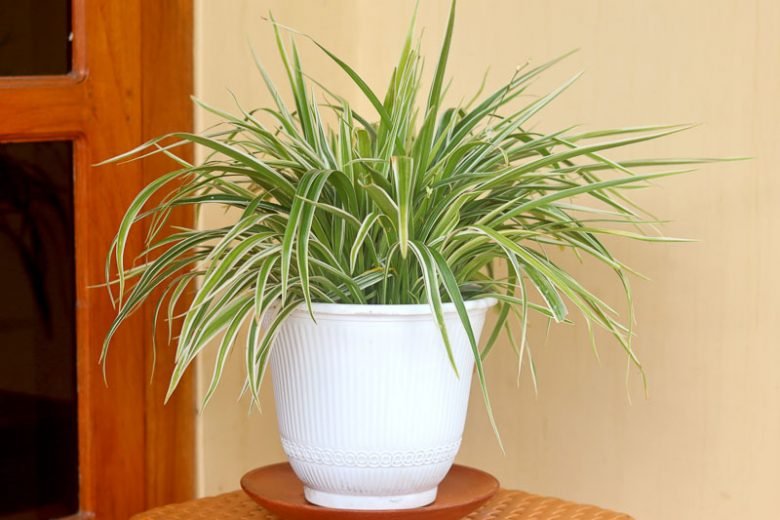
Why are Spider Plants so popular among houseplants? First off, they bring a lovely splash of green into any room, making your space feel lively and fresh.
But that’s not all – these plants are also great at cleaning the air. They can filter out toxins like formaldehyde, xylene, and toluene, which are common in many households.
What’s more, taking care of these plants is a breeze. They don’t need direct sunlight; a spot with indirect light is perfect for them. They’re also okay with a range of temperatures, showing how tough they can be.
Because of this, even if you’re new to gardening or often forget to water plants, a Spider Plant can be a great choice.
On top of all that, the way their leaves arch and cascade makes any room feel freer and more vibrant.
2. Snake Plant (Sansevieria trifasciata)

Next on the NASA list is the Snake Plant, also known as Sansevieria trifasciata.
It can also get rid of nasty stuff like formaldehyde, benzene, xylene, toluene, and nitrogen oxides, which makes the air you breathe healthier.
What’s more, the Snake Plant is super easy to take care of. It does well in low light and doesn’t need to be watered very often, so it’s perfect if you want to improve your indoor air quality without having to work hard at it.
On top of that, its adaptability and air-purifying abilities make it a great addition to any home or office.
3. Peace Lily (Spathiphyllum)
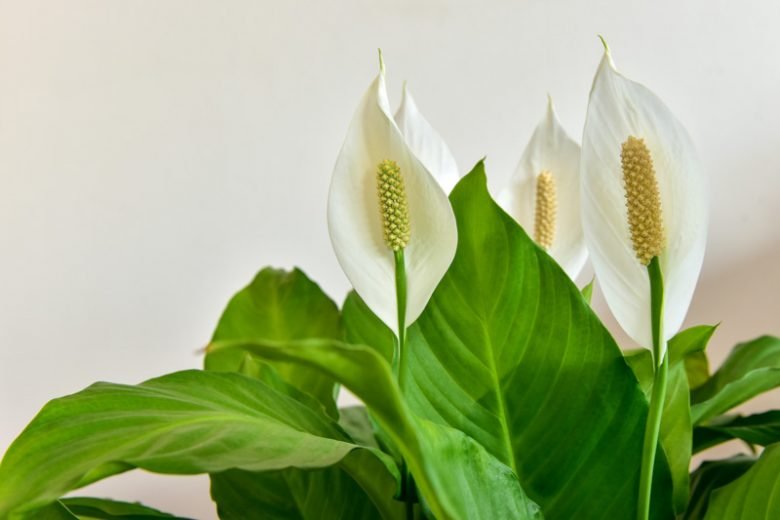
The Peace Lily, or Spathiphyllum, is a favorite among houseplants, and for good reason. Not only does it add a touch of natural beauty to any room with its vibrant green leaves and eye-catching white flowers, but it also plays a big role in making the air inside your home or office cleaner.
This plant is really good at getting rid of harmful chemicals that you might find in everyday household items and cleaning products, like formaldehyde, benzene, and ammonia.
Taking care of a Peace Lily is pretty straightforward. It doesn’t need direct sunlight; instead, it prefers indirect light, and you just need to keep the soil moist without overwatering it.
4. Aloe Vera (Aloe barbadensis miller)
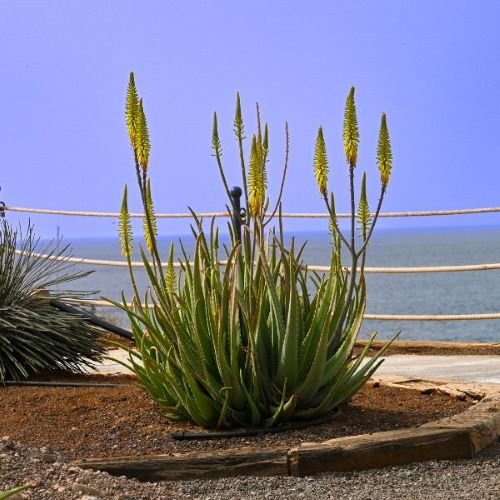
On to the next plant, let’s talk about Aloe Vera. This cool succulent, known in the science world as Aloe barbadensis miller, does more than just look good.
It’s great for cleaning the air in your room, especially stuff like formaldehyde and benzene, which can come from things like cleaning supplies and paint.
Plus, taking care of it is super easy. Just put it somewhere with bright light, but not directly in the sun, and don’t water it too much. Let the soil get dry before you water it again.
That being said, Aloe Vera isn’t just about clean air. You might know it for its gel, which is a go-to for sunburns and skin irritations. Because of this, having an Aloe Vera plant around means you’ve got a natural first-aid kit right at home.
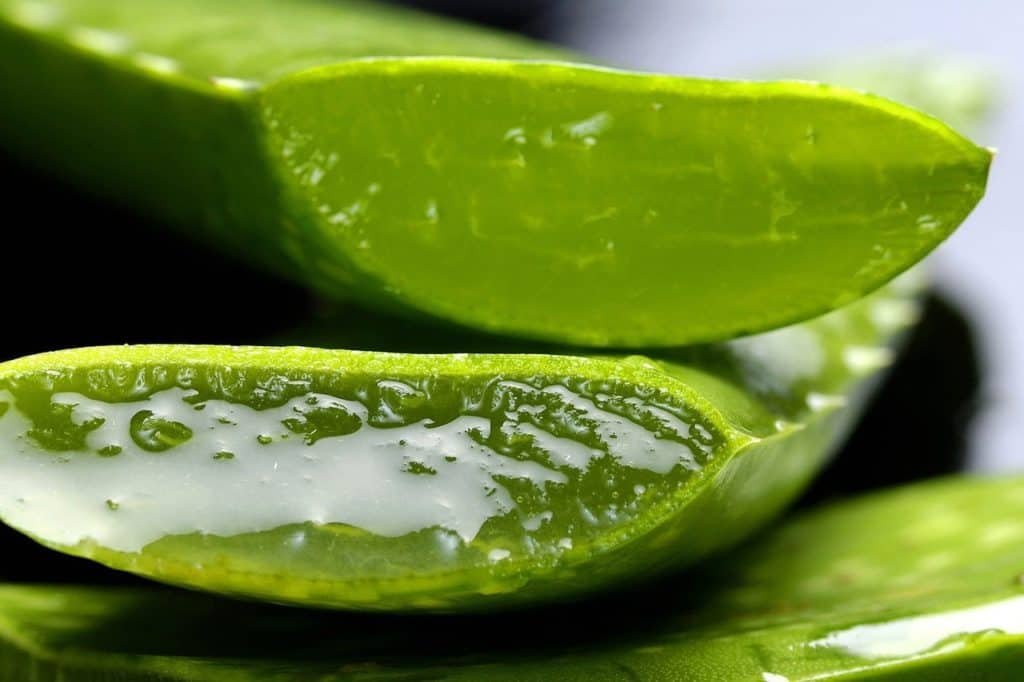
For example, if you accidentally touch a hot pan or spend too long in the sun, a little bit of Aloe Vera gel can help cool your skin down and make it feel better.
Related: 14 Aloe Vera Benefits & Uses Backed By Research
5. Boston Fern (Nephrolepis exaltata)
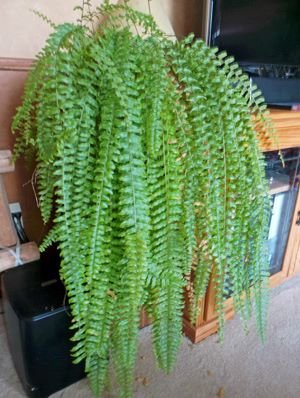
Boston Ferns, or as some might know them by their scientific name, Nephrolepis exaltata, are not just about looks; they’re also fantastic at cleaning the air. For example, they can remove formaldehyde and xylene.
That being said, they do need a bit of TLC to thrive. They love humidity, so they’re perfect for a bathroom or kitchen where the air is moist.
They also prefer light that’s not too harsh, just a nice, soft glow. And don’t forget, they get thirsty, so regular watering is a must.
With a little care, these ferns can be a great way for us to contribute to a cleaner, greener living space.
6. English Ivy (Hedera helix)

English Ivy, or Hedera helix as it’s scientifically called, is a favorite for adding greenery both inside and outside your home.
This climbing plant is particularly good at getting rid of nasty chemicals like formaldehyde, benzene, xylene, and toluene.
To keep your English Ivy working its magic, you need to give it the right care. It likes moderate, indirect light and soil that’s moist but not too wet.
7. Rubber Plant (Ficus elastica)
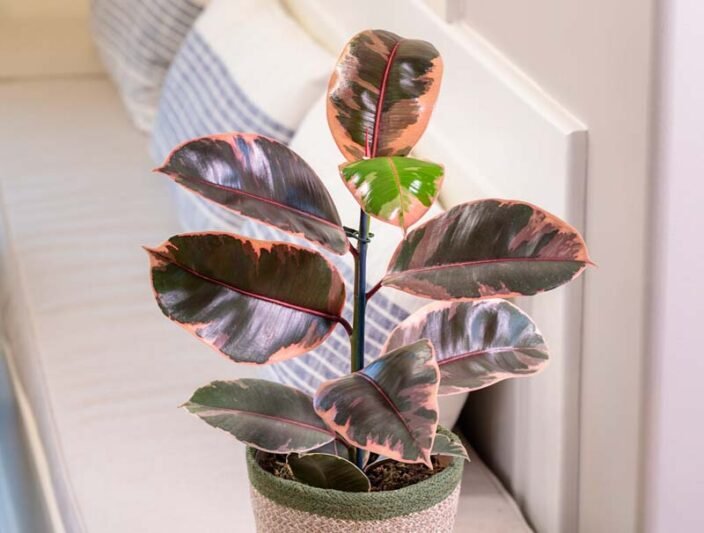
The Rubber Plant, or Ficus elastica, is particularly good at getting rid of formaldehyde, a gas that comes from everyday things in our homes like furniture, carpets, and cleaning supplies.
Inhaling too much of this gas can be bad for our health, but having a Rubber Plant around helps soak it up like a sponge, making the air safer for us to breathe.
To make sure your Rubber Plant stays happy and keeps doing its air-cleaning job, you’ll want to put it somewhere with bright, indirect light.
Also, be careful not to overwater it. Wait until the top inch of soil feels dry before giving it a drink.
8. Golden Pothos (Epipremnum aureum)

Golden Pothos, with its beautiful trailing vines and bright, heart-shaped leaves, is not only a feast for the eyes but also a great way to purify the air inside your home or office.
This plant is super easy to take care of, making it perfect for those of us who might not have the greenest thumbs. It enjoys bright, indirect light and doesn’t need to be watered too often, which is great if you’re busy or often forget to water your plants.
What’s really cool about Golden Pothos is that it actively cleans the air by removing nasty chemicals like formaldehyde, benzene, xylene, and toluene.
Because of this, we think Golden Pothos is a fantastic choice for anyone looking to spruce up their living or working space with a bit of greenery. It’s a low-maintenance plant that offers both aesthetic appeal and health benefits.
9. Bamboo Palm (Chamaedorea seifrizii)
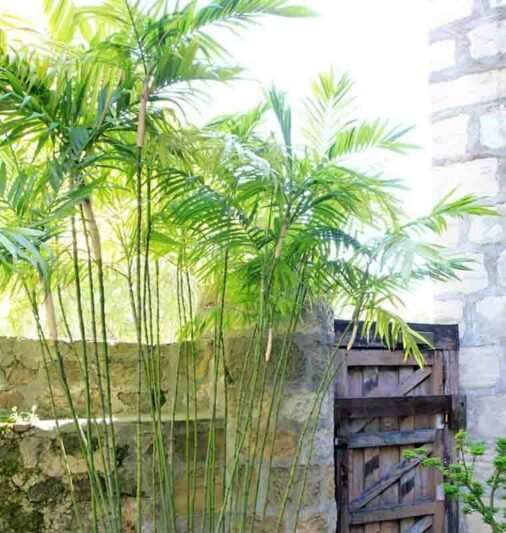
The Bamboo Palm, also known as Chamaedorea seifrizii, is a fantastic pick for making the air inside your home cleaner and fresher.
This plant is a hard worker when it comes to getting rid of nasty stuff in the air like formaldehyde, benzene, trichloroethylene, and xylene.
Through its leaves and roots, this plant soaks up these pollutants, which is awesome for the air you breathe.
For it to do its job well, you should place it in a spot with indirect sunlight and keep the soil damp but not too wet by watering it regularly.
Because of its knack for cleaning the air and the fact that it’s not too tricky to take care of, the Bamboo Palm is a top choice for anyone looking to improve their indoor air quality.
10. Dracaena (Dracaena spp.)
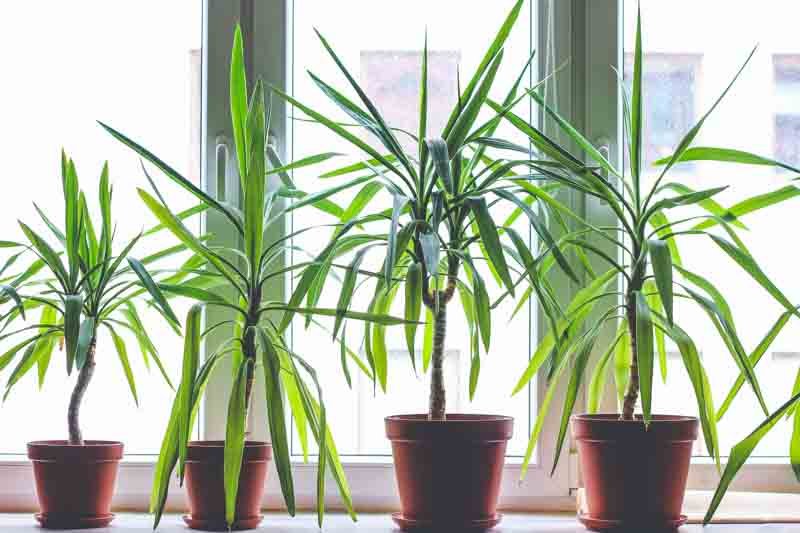
Dracaena plants are not only tough but also great at cleaning the air inside your home or office. These plants can get rid of formaldehyde, benzene, and other chemicals.
While Dracaenas are pretty easygoing, they do need some care to thrive. They like bright light, but not direct sunlight. And they prefer soil that’s moist, but be careful not to give them too much water.
That being said, if you’re looking for a plant that can help clean the air without a lot of fuss, a Dracaena could be a great choice.
11. Areca Palm (Dypsis lutescens)
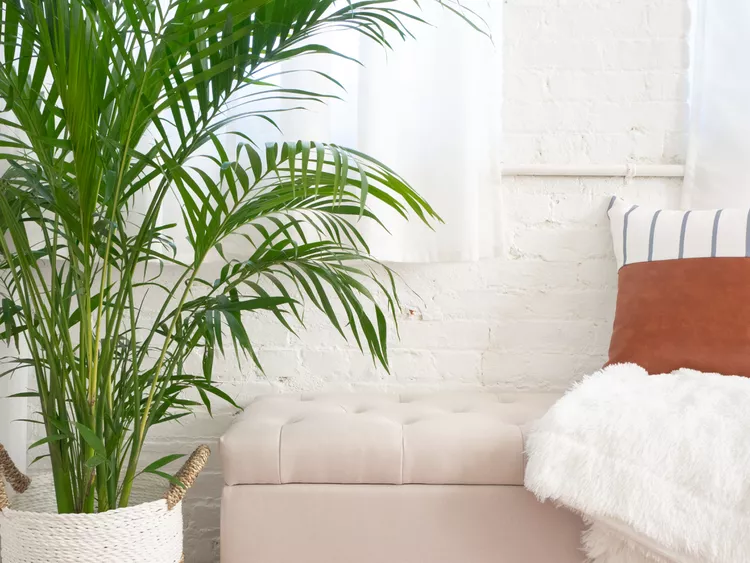
The Areca Palm, or Dypsis lutescens, is another popular choice for making our homes and offices look better.
This plant is great at removing formaldehyde, xylene, and toluene from the air.
You see, formaldehyde is found in many things we use every day, and breathing it in can be bad for us. Similarly, xylene and toluene can cause problems like headaches and dizziness, but this plant helps get rid of them too.
Taking care of an Areca Palm is pretty straightforward. You’ll want to place it in a spot with bright, indirect light.
Make sure to water it regularly, but don’t let the soil get too dry or too wet.
12. Gerbera Daisy (Gerbera jamesonii)

Gerbera Daisies, also known as Gerbera jamesonii, are incredibly beautiful flowers that come in a wide array of colors, from deep reds to bright yellows.
These flowers have the ability to remove harmful chemicals like benzene and trichloroethylene from the air, making them a natural air purifier.
To keep your Gerbera Daisies healthy, you’ll need to make sure they get plenty of bright light and are planted in well-drained soil. A sunny window is the perfect spot for them.
13. Philodendron (Philodendron spp.)
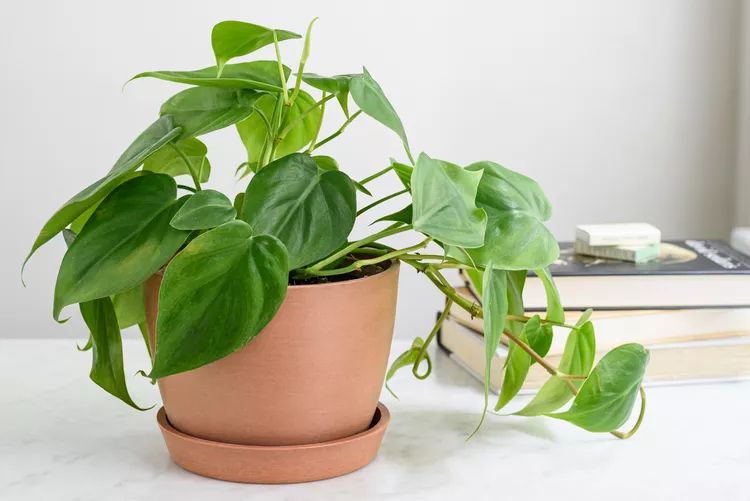
Philodendron plants, with their beautiful leaves, do more than just make your space look nice.
They’re also great at cleaning the air, especially by getting rid of formaldehyde.
To keep your Philodendron happy, make sure it gets indirect light and water it when the top inch of soil feels dry.
That being said, don’t overwater it, as these plants prefer to dry out a bit between waterings.
As a result, you’ll have a thriving plant that also helps purify your air.
14. Weeping Fig (Ficus benjamina)
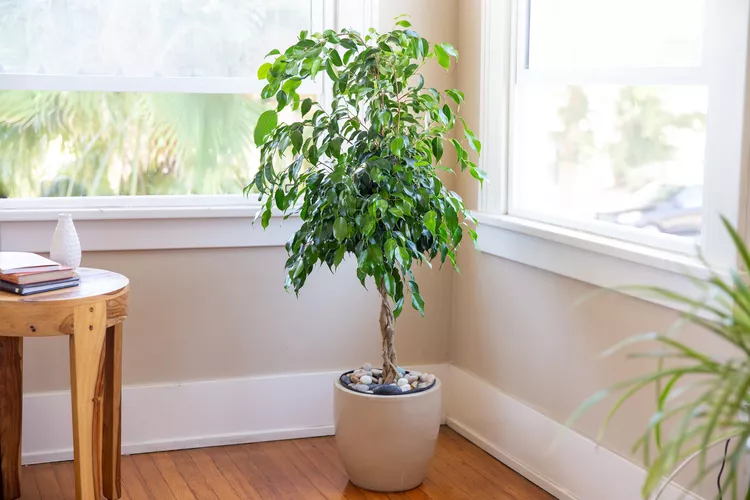
The Weeping Fig, also known as Ficus benjamina, is a stunning houseplant that brings a touch of sophistication to any room.
But that’s not all – this plant is also a powerhouse when it comes to purifying the air we breathe. It’s incredibly effective at removing common pollutants like formaldehyde, xylene, and toluene.
To keep your Weeping Fig happy and thriving, it’s best to place it in bright, indirect light and water it whenever the top inch of soil feels dry.
This low-maintenance plant prefers average room temperatures between 65°F to 75°F, making it the perfect addition to any home or office looking to improve air quality naturally.
15. Chinese Evergreen (Aglaonema)
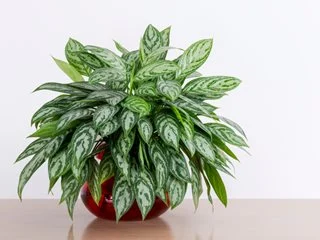
The Chinese Evergreen, or Aglaonema, is a popular houseplant that not only makes your home look greener but also helps clean the air.
This plant is really good at getting rid of formaldehyde and benzene – pollutants often found in things like cleaning products, plastics, and cigarette smoke.
What’s more, this plant is super easy to take care of. It does well in low to bright indirect light and doesn’t need to be watered very often.
Are plants better than air purifiers for cleaning indoor air?
Well.. no.
While it’s true that these plants, can naturally remove some chemicals from the air, they work at a relatively slow pace.
Because of this, they may not be as effective in larger spaces or in removing enough pollutants to significantly improve your air quality.
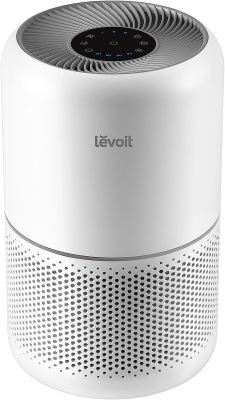
LEVOIT Air Purifier for Home / Amazon
On the other hand, modern air purifiers are specifically designed to efficiently clean the air. According to the United States Environmental Protection Agency, air purifiers with HEPA filters, can filter out up to 99.97% of airborne particles, making them a dependable choice for maintaining good indoor air quality, especially if you suffer from allergies or asthma.
Here’s a breakdown comparing plants and air purifiers:
Plants:
- Offer natural purification
- Can add humidity to your space
- Provide aesthetic value
- May boost your mood
- Generally low cost
Air Purifiers:
- Efficiently filter the air
- Cover larger areas
- Remove allergens from the air
- Can operate continuously
- Require an initial investment
That being said, while plants have their benefits, if you’re looking for a reliable way to keep your indoor air clean, especially in larger spaces, an air purifier may be the better choice.
However, having a few plants around can certainly contribute to a healthier and more pleasant indoor environment.
